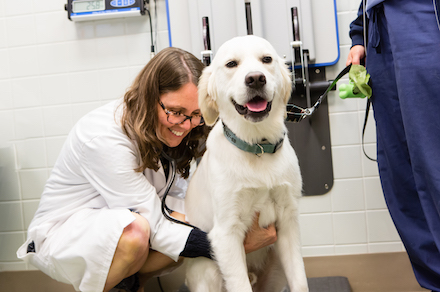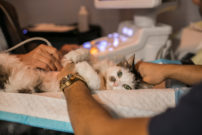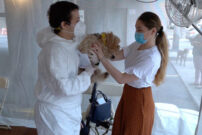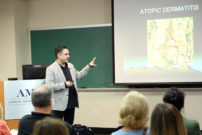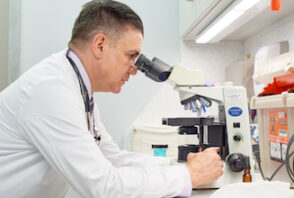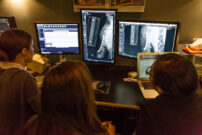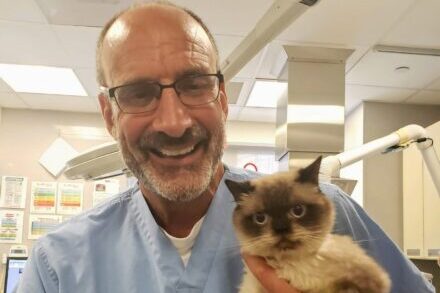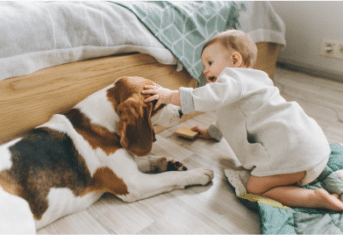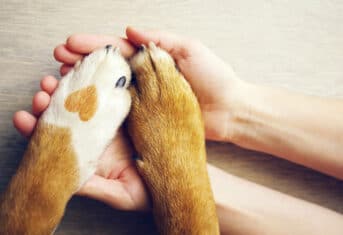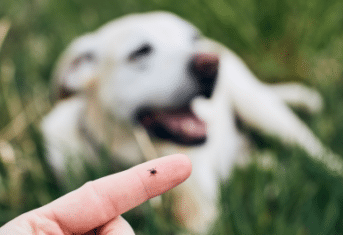What does it mean when dogs lick excessively?
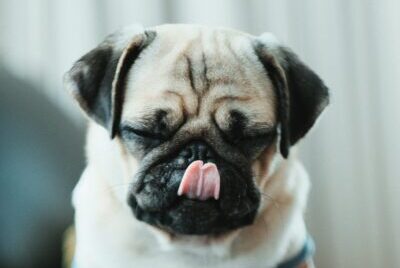
What does it mean when dogs lick excessively?
Photographs frequently capture the family dog licking the face of its delighted person. People frequently refer to this licking behavior as dog “kisses.” While everyone wants their dog to love them AND to show it, dogs explore their environment through their senses of smell and taste. A sniff and a lick may simply represent a dog checking you out, since they don’t speak and can’t ask questions about the people in their world. But, if you dog’s licking behavior is excessive, it can indicate an illness.
Veterinarians divide excessive licking into three big categories of disease: medical disorders, behavior disorders, and combinations of the two.
Medical Disorders Associated with Excessive Licking
Medical problems can cause excessive licking. For example, gastrointestinal disorders such as nausea or acid reflux are two common culprits underlying lip-licking. But inflammatory bowel disease and intestinal parasites may also cause excessive licking of objects and surfaces. Dogs that lick an area on their body may also be painful in that area. For example, a dog that chronically licks its wrist may have arthritis in the wrist. Dogs suffering from allergies often lick their feet, and a skin infection can be itchy, causing a dog to lick. Many textbooks suggest excessive licking might be a neurologic disorder, but there is not much scientific support for that suggestion.
Behavior Disorders Associated with Excessive Licking
The second category of disease that causes excessive licking is behavior disorders, or obsessive compulsive disorders. Lip licking is also a sign of anxiety. Watch your dog the next time he goes somewhere he doesn’t like – the groomer or the veterinarian’s office. If he licks his lips a lot, then he is not surprisingly anxious.
Combination Disorders Associated with Excessive Licking
Finally, excessive licking may be a combination of medical and behavioral disorders. Pica, eating or licking nonfood objects, can be either a medical or behavior disorder. Some dogs with gastrointestinal disorders or anemia lick or eat nonfood items like dirt, rocks or the grout between the tiles your bathtub. Other dogs that eat nonfood items have a behavioral problem, for example, the dog that AMC’s Internal Medicine Service treats to endoscopically remove coins from his stomach on multiple occasions.
Human Illness Resulting from Excessive Licking
For most of us, a lick from a dog carries no risk. For others, a lick can be deadly. Organ transplant recipients, for example, need to take special care around pets. The Centers for Disease Control have additional guidelines for safe handling of pets that apply to children, especially those under 5 years of age. A special word of caution regarding letting a dog lick your face. If a dog is close enough to your face or your child’s face to lick it, a bite injury is possible. Children are the main recipients of dog bite injures. Take some time to educate your child about safe interactions with dogs and discourage them from letting dogs lick their face.





